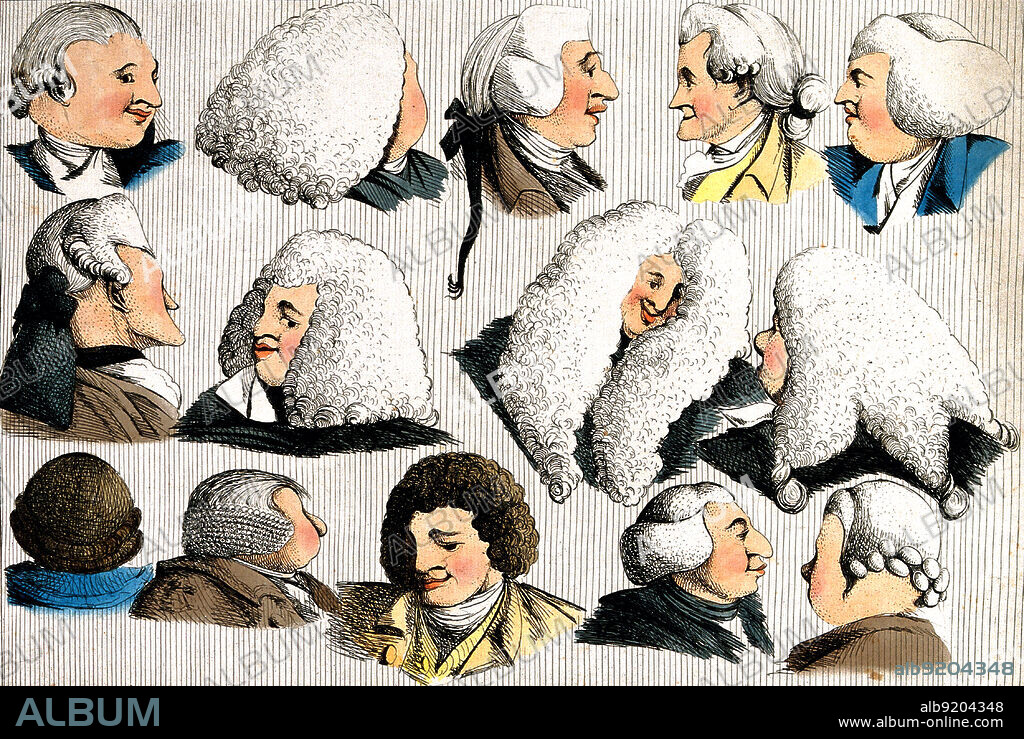alb9204348
Wigs for Men, 1773

|
Ajouter à une autre Lightbox |
|
Ajouter à une autre Lightbox |



Avez-vous déjà un compte? S'identifier
Vous n'avez pas de compte ? S'inscrire
Acheter cette image

Titre:
Wigs for Men, 1773
Légende:
Voir la traduction automatique
Fourteen heads showing different types of wigs for men. The 18th century was an age of elegance. Never in European history do we see men and women so elaborately artificial, so far removed from natural appearance. What could not be done with the natural hair was made with wigs. This epoch was an extravagant explosion of amazing hairstyles, a reaction completely opposed to the modesty and shyness of former centuries. In the mid-to-late 18th century, large, elaborate and often themed wigs were in vogue for women. These combed-up hair extensions were often very heavy, weighted down with pomades, powders, and other ornamentation. Men's wigs were powdered in order to give them their distinctive white or off-white color. Powdering wigs and extensions were messy and inconvenient, and the development of the naturally white or off-white powder-less wig (made of horsehair) for men made the retention of wigs in everyday court dress a practical possibility. Colord etching by by M. Darly, 1773.
Crédit:
Album / Wellcome Images / Science Source
Autorisations:
Modèle: Non - Propriété: Non
Questions sur les droits?
Questions sur les droits?
Taille de l'image:
Pas disponible
Taille d'impression:
Pas disponible
Mots clés:
 Pinterest
Pinterest Twitter
Twitter Facebook
Facebook Copier le lien
Copier le lien Email
Email
